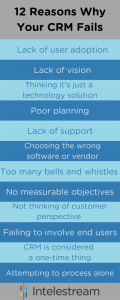
Do you ever feel like you have too many blogs to read, but too little time? I do. And as a result, I tend to skim blog headlines to make sure I don’t miss out on important marketing and design topics or hacks to help me do my work even better.
Today, however, was a different story.
When I saw a post from HubSpot entitled “The Rebel’s Guide to Design: 16 Rules You Should Break,” I immediately clicked the link – more out of concern more than curiosity. To my horror, it led to a short blog featuring a third-party SlideShare covering why you shouldn’t follow certain design rules, and why it’s rebellious and cool to break these rules. SIGH.
This is an awful thing for a marketing blog to teach their audience (even if the SlideShare wasn’t created by them), and here’s why…
“Ditch all the rules.”
According to this author, there are 16 design rules, and you shouldn’t follow any of them. But if that’s the case, how can they be called rules at all? Most of the referenced “rules” – such as the use of whitespace and visual hierarchy parameters – are not rules at all. Rather they’re foundational elements of design, while others are design best practices.
What’s the difference? Rules, by definition, shouldn’t be broken. Best practices, on the other hand, are concepts you subconsciously understand are worth striving for – a target worth aiming at. They help to guide the creative process (not dictate it), by showing how a good design project is usually composed.
But not all best practices are applicable to every single design project, and that’s where the designer must use his or her skill and knowledge to push boundaries – as opposed to shattering rules blindly, across the board.
Good design is not about thinking outside the box; it’s about learning how to use the resources and concepts you’ve been given to create a visually compelling world within that box for your audience. Which leads me to my next point…
“Forget who you are designing for.”
Forget who you’re designing for? Seriously?
There is no way that anyone using inbound marketing should ever agree with this statement. Inbound marketing revolves around audience personas, and it is a useless effort without them. No matter how trends shift, design should cater to the needs of the audience, not the whims of a designer. In fact, the user experience alone often drives how a design is laid out.
“No matter how trends shift, design should cater to the needs of the audience, not the whims of a designer.”
“The designer in you knows the best.”
Is there really a designer in everyone? I do truly believe that design is something that can be learned and practiced by anyone, but like any good skill it takes time to develop. Few people have an innate sense of how to create the perfect design, and it’s misleading to tell marketers that their years of marketing experience translate automatically to design expertise.
“You can only break the rules if you know the rules.”
Okay, I won’t deny this statement. In fact, this is something that was often brought up during the design courses I took in college.
But please don’t misunderstand me. Teaching marketers that design “rules” are meant to be broken is still the greatest disservice you can do to them. Why? Simply put, marketers don’t know the rules to begin with, so you can’t ask them to toss them out the window without a foundational understanding of why those rules were in place to begin with.
Even this particular SlideShare, while naming these 16 rules, doesn’t actually go into depth on what the rules truly mean. It only spends time explaining why you should break them. So, the marketer audience is still left in the dark, wondering what the rules mean and if they might actually be important.
And as I mentioned before, there are rules and then there are best practices. Both are similar, yet vary from each other. Despite what some people seem to believe, rules are not made to be broken. Rules provide boundaries and order in what would otherwise simply be chaos. Best practices do as well, but they encourage much more flexibility.
Final Thought
It may just be me, but this SlideShare is an insult to every professional designer out there, whether they live in the world of inbound marketing or not. We don’t spend years in school and training ourselves in the rules and best practices of our field to be told that it was just a lie all along. They may evolve over time, but those rules and best practices are there for a reason, and it’s in your best interest to respect and utilize them. Likewise, why would anyone ever tell a marketing professional to be a designer – let alone a “more rebellious” one – in the first place?
Is a marketer’s input needed at certain points? Absolutely. Does their opinion matter? Most definitely. (Heck, I even wrote a whole blog post about this.) But the fact remains that design isn’t their area of expertise.
That said, I do agree that some boundaries should be pushed, so don’t be afraid to create your own designs and figure out how these rules can apply for a marketing project. Use them to make your work even better; that’s what they are there for, after all.
What design rules and best practices do you observe religiously, which are you more flexible with, and why? Let me know in the comments below.
Digital & Social Articles on Business 2 Community
(74)









